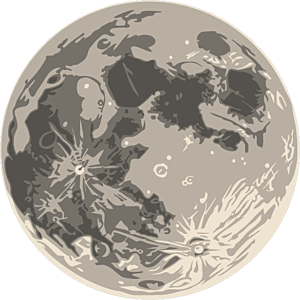The Downlink • Jul 26, 2024
Serendipity, a super-Jupiter, and saving VIPER
Space Snapshot

NASA’s Curiosity rover made a surprise discovery recently when it found rocks made of pure sulfur, something never before seen on Mars. The Curiosity team is searching for clues in the surrounding area to help understand what would have formed this elemental sulfur. Image credit: NASA/JPL-Caltech/MSSS.
Fact Worth Sharing

The Curiosity rover’s recent discovery of pure sulfur crystals on Mars was a serendipitous accident. The rock containing the crystals wasn't a science target, it was just in the way. The rock cracked up when the rover drove over it, revealing the crystals within.
Mission Briefings


JWST is proving its exoplanet imaging skills. A team working with the space telescope recently released images of a nearby “super-Jupiter” exoplanet (pictured), also the coldest and oldest exoplanet ever imaged. The planet Epsilon Indi Ab is similar in temperature to Jupiter and Saturn, providing a rare opportunity for astronomers to study the atmospheric composition of an exoplanet similar to those found in our Solar System. Image credit: NASA / ESA / CSA / STScI / Elisabeth Matthews (MPIA).

NASA has provided more details about how it will deorbit the ISS. The previous plan had been to use three Russian Progress cargo spacecraft to guide the International Space Station into the Pacific Ocean at the end of its lifetime, but NASA now says the ISS partners have concluded that this won’t work. Instead, they are planning on using a new deorbit vehicle based on SpaceX’s Cargo Dragon, but much more powerful.

ESA is targeting 2031 for the first launch of its Argonaut lunar lander. The versatile landing system is being designed to deliver scientific instruments, rovers, cargo to support human exploration of the Moon, or other payloads. The first Argonaut mission will launch in 2031 on an Ariane 6 rocket.

Analysis of Apollo lunar samples has shed light on the Moon’s early history. Researchers studying samples of the Moon brought back by Apollo astronauts have precisely dated the global magma ocean that once covered the lunar surface, which they say lasted 4 million years 4.33 billion years ago. This may provide new insights into how the Moon formed from a giant planetary impact.
From The Planetary Society


The science community is rallying to save VIPER. Following NASA’s announcement of its intent to cancel the VIPER mission to the Moon’s south pole, The Planetary Society helped circulate a letter signed by 1,000 individuals from the lunar and planetary science community to more than 200 key congressional staffers. The letter urges Congress to intervene, emphasizing the importance of VIPER for future lunar exploration and scientific discovery. Pictured: An artist’s impression showing NASA’s VIPER rover moving down a ramp of Astrobotic’s Griffin lander. Image credit: Astrobotic.

Advocacy works, and VERITAS is proof of that. In late 2022, NASA’s VERITAS mission to study Venus was defunded. Thanks to the help of space advocates — like Planetary Society members — the mission is now back on. Darby Dyar, the deputy principal investigator for VERITAS, joins this week’s Planetary Radio to share the story.

Why does Jupiter spin so fast? The Solar System’s largest planet rotates roughly once every nine hours and 50 minutes — extremely quickly for such a large object. Earth, in comparison, rotates at a relatively sedate 23 hours and 56 minutes. Why this is the case can tell us a lot about not only the Solar System but worlds around other stars, too.

Our online member community is gearing up for the August book club meeting. This month, members read “Still As Bright: An Illuminating History of the Moon, from Antiquity to Tomorrow” by Christopher Cokinos. The author will join members in a virtual Q&A on Aug. 1 at 6:00 p.m. PT to discuss the book, his personal immersion in all things lunar, and how our natural satellite is enmeshed throughout human culture and history. Not yet a Planetary Society member? Join today!
What's Up

Look for reddish Mars and bright Jupiter close together near the Moon on July 30 in the predawn eastern sky. On July 31, the Southern Delta Aquariid meteor shower peaks. This medium-strength shower (~20 to 25 meteors per hour from a dark site) is best visible from the Southern Hemisphere. Learn more at planetary.org/night-sky.
Wow of the Week

Imagined depictions of real spacecraft are a special kind of space art. This digital rendering shows ESA’s Argonaut lunar lander in an imagined situation where it has brought cargo to the Moon for retrieval by astronauts. The artist’s careful attention to detail allows us to see a very plausible future scenario for ourselves, making the spacecraft and its exploration potential feel all the more real. Image credit: ESA.
Send us your artwork!
We love to feature space artwork in the Downlink. If you create any kind of space-related art, we invite you to send it to us by replying to any Downlink email or writing to [email protected]. Please let us know in your email if you’re a Planetary Society member!


 Explore Worlds
Explore Worlds Find Life
Find Life Defend Earth
Defend Earth

